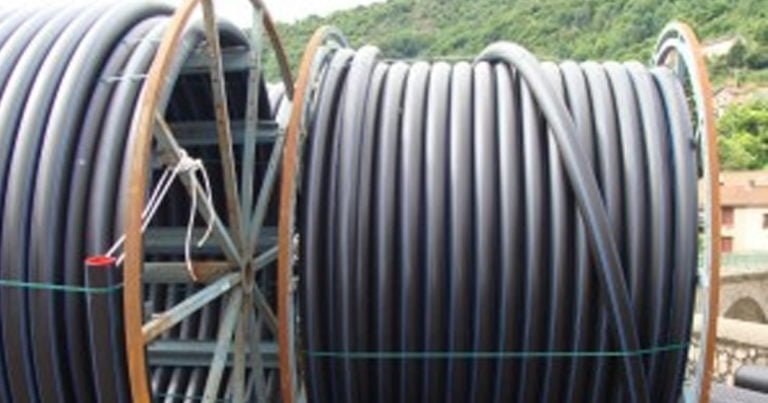Polyethylene is a modern water distribution and transport material that has proved its reliability over the course of the years since the 1950s, when the first pipelines were installed.
These qualities are put to use even today to envelop the exteriors and line the interiors of cast-iron pipelines.
So is PE gaining ground on cast iron?
It’s a fact, polyethylene pipelines are the preferred type for transporting and distributing drinking water. Over the past 10 years, polyethylene’s market share for pipelines installed in Europe has been 70%, with cast-iron coming in at 10% and PVC at 20% (source AMI).
Cast iron has been used for many decades and was the first material to be widely used in France on drinking water supply networks. Grey cast-iron was the only material to offer an acceptable level of durability for the time, but being much too easily broken and the source of many a leak, it was replaced by ductile cast iron, which was less fragile, in the 1980s. However, the increased flexibility came at the cost of reduced corrosion resistance, making it necessary to protect the pipes from the earth with an outer surface treatment and from the water being conveyed by an inner coating, sometimes made of polyethylene! So why not just lay polyethylene pipes in the first place?
Ductile cast iron, although better than grey cast iron, is still open to question – how hard-wearing is it if the outer protective surface is accidentally damaged?
The connecting systems are also bear comparison: cast-iron pipes are mechanically fitted together with ease while waterproofing is taken care of by a seal. Polyethylene pipes are easily fitted together by welding either by using fusion-welded unions or direct butt welding of the pipes to each other.
As 80% of the leaks encountered come from mechanical connections, it makes sense to choose welded unions to achieve very high pipeline yields.
The flexibility of polyethylene pipes allows them to be packaged in very long, uninterrupted lengths in coils or on drums depending on the diameter. This simplifies operations on the construction site and makes the work more reliable.
Site machinery can be scaled down or eliminated thanks to the lightness of the polyethylene pipes.
Cast iron pipes still have a place in certain situations but are often left behind by modern materials such as polyethylene. For example, the gas distribution network authorities made the decision decades ago to have a 100% polyethylene network because of its perfect hermeticity and enormous reliability.
MPS
